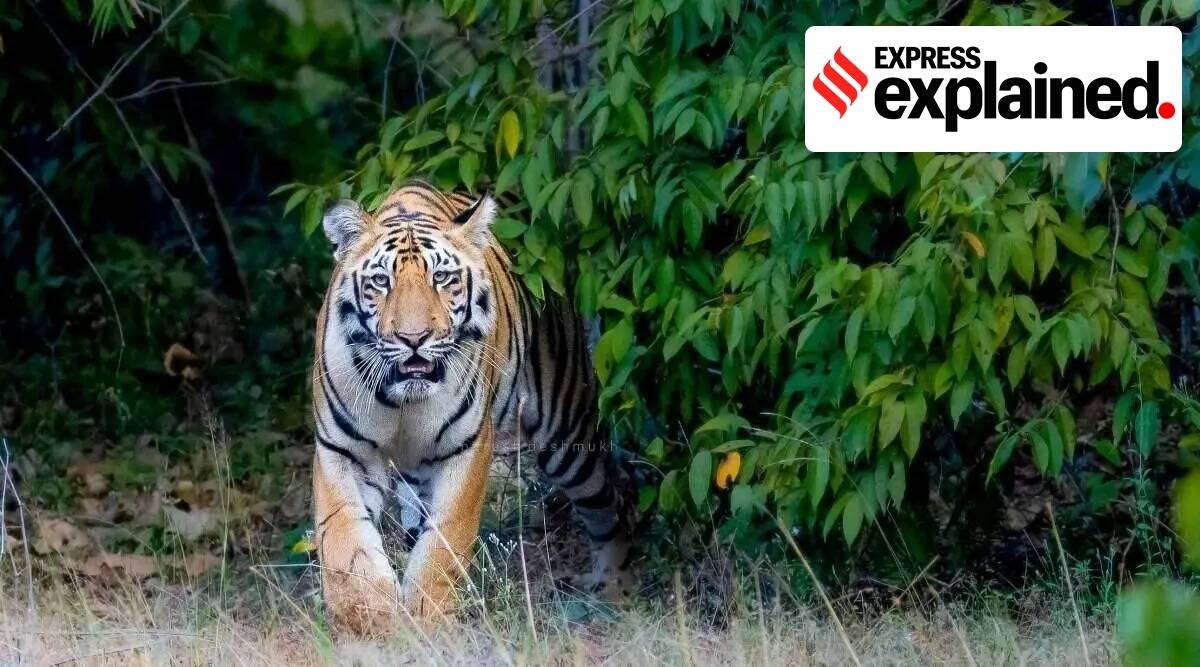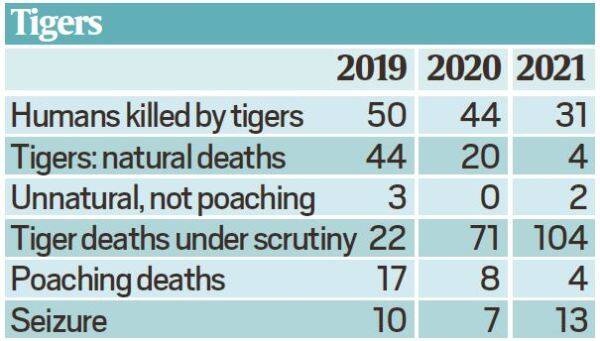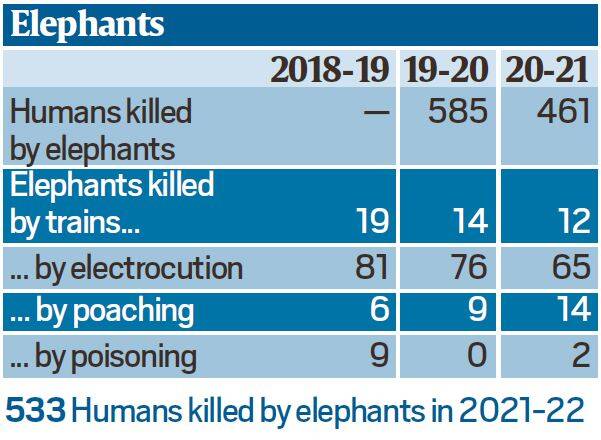Description

Disclaimer: Copyright infringement not intended.
Context: Between 2018-19 and 2020-21, 222 elephants were killed by electrocution across the country, 45 by trains, 29 by poachers and 11 by poisoning. Among tigers, too, 29 were killed by poaching between 2019 and 2021, while 197 tiger deaths are under scrutiny. These figures emerge after adding up data tabled in Lok Sabha by Minister of State for Forest, Environment and Climate Change, in a written response to a question on human-animal conflict


What is Man-Animal Conflict (MAC)?
- It refers to the negative interactions between people and wild animals, with consequences for both people and their resources and wildlife and their habitats (IUCN 2020).
- Over 2,000 people in India were killed by elephants while tigers claimed over 200 lives in the last five years, according to data provided by the government.
Common Reasons:
- Competition for shared natural resources between people and wildlife
- Human population growth and the transformation of land use.
- shrinking forest cover, poaching, rapid and unplanned urbanization
- electrification penetrating into forest areas
- increasing road density
- destruction of natural animal corridors
- agricultural expansion and cultivation up to forest boundaries.

Consequences of MAC:
- Influences food security of people and the well-being of both people and animals.
- serious global threat to sustainable development and conservation in urban and rural landscapes.
- destruction of crops and reduced farm productivity
- competition for grazing lands and water, livestock predation, injury and death to farmers,
- damage to infrastructure and
- increased risk of disease transmission among wildlife and
Conflict mitigation strategies includes:
- Lethal control
- Translocation of problematic animals
- Predator-deterring guard dogs
- Effective land use planning
- Compensation
- Spatial analyses and mapping conflict hotspots:
- Erection of fences or other barriers
- Managing garbage to prevent attraction of carnivores
- Improving community education and perception of animals
- population size regulation and
- endangered species preservation
- applying scientific research, sociological studies, and the arts to reducing conflicts.
Existing government policies:
- The government has come up with some policies to grapple with the problem: The compensation for human deaths has been increased from Rs 2.5 lakh to Rs 5 lakh;
- Project Elephant and National Tiger Conservation Authority (NTCA) guidelines have been issued to mitigate the conflict.
- Immune-contraception has been introduced in order to control the population of nilgai, monkeys and wild boars.
https://indianexpress.com/article/explained/telling-numbers-toll-human-animal-conflict-tigers-elephants-8051231/
1.png)














